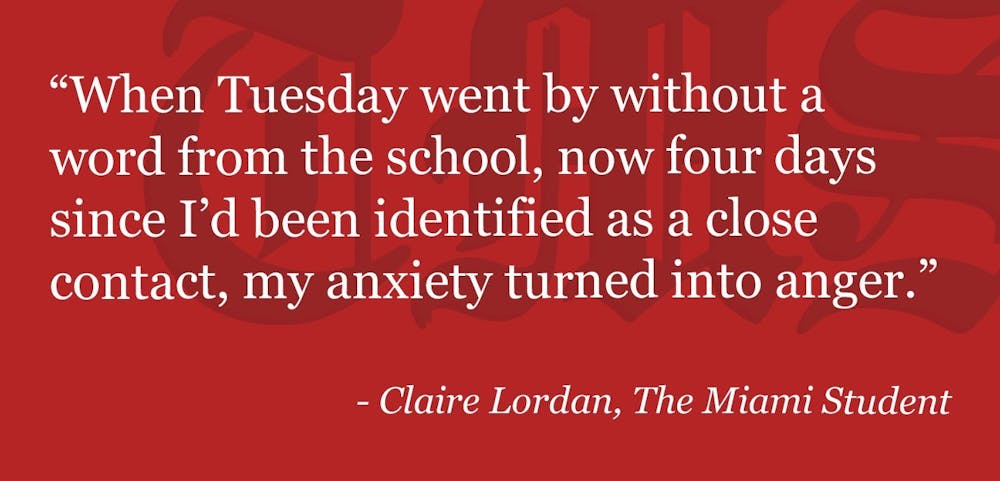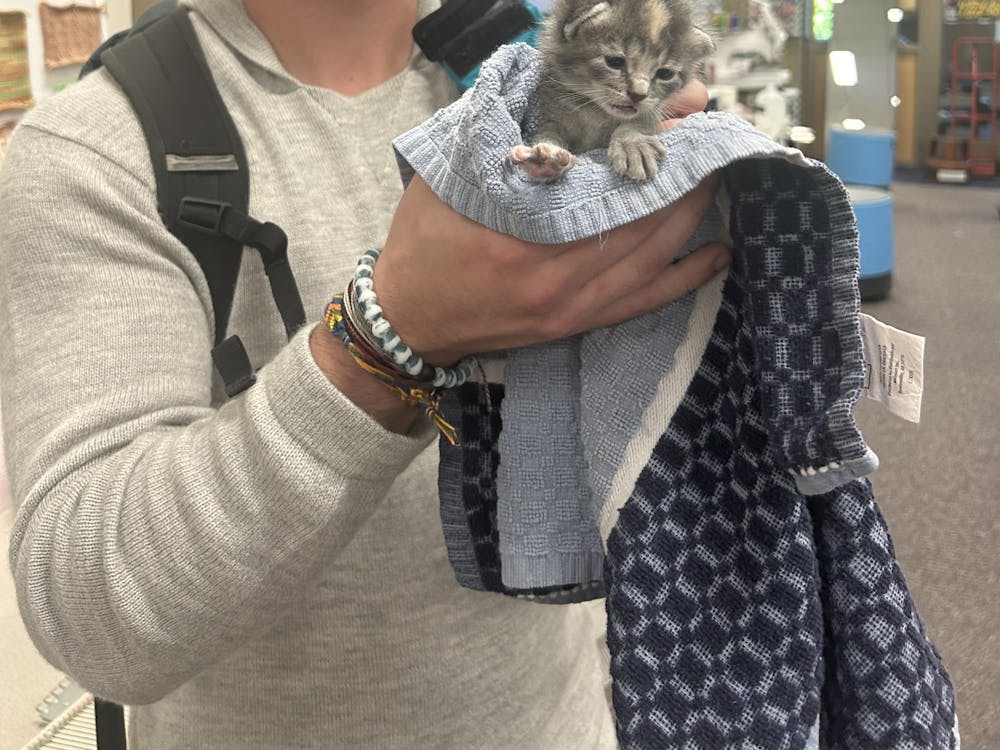When I woke up to a phone call at 8:00 a.m. on a Friday, the one day of the week I have no morning classes, I was a little pissed. If anyone had something they needed to tell me, it could wait until at least 10:00 a.m.
When I saw my boyfriend’s name across the top of my phone, I was instantly wide awake. In a moment, I knew exactly how the next few minutes were going to play out. He’d been tested for COVID-19 a couple days earlier, and I had a feeling he probably wasn’t calling so early to tell me that he was negative.
“Hey. I got my test results back.”
Have you ever known exactly what the answer to your question is going to be, but you still have to ask it anyways? Not fun.
“Is it positive?”
“Yeah.”
Shit.
Ten minutes later, I was on the phone with Student Health Services (SHS), feigning a cough in the hopes of getting tested. I know there’s some moral ambiguity in lying to a medical professional, but considering my options were either to lie about having symptoms or not get tested at all, I wasn’t exactly losing sleep over it.
The ends justify the means sometimes anyway. So, I got my test.
For the next two days, I hunkered down in my residence hall room and waited for my inevitable positive test.
Despite not hearing anything from the university or SHS yet, I wasn’t too fazed. I figured the school had recorded my pending test result, and I’d be told what to do once it came in.
Looking back, putting that much faith in the university was naive, to say the least.
Enjoy what you're reading?
Signup for our newsletter
On Sunday afternoon, while on FaceTime with my mom and enjoying my early Valentine’s day present (COVID? In the middle of a pandemic? Butterflies.), I got a notification that my results had come in.
“At least you’ll know for sure now,” my mom said.
By the time I scrolled to the very bottom of the email, I couldn’t even be excited about the NEGATIVE scrawled across in green text.
“So what, is the school just gonna leave me alone now?” I asked her.
“No, I’m sure they’ll still contact you,” she said assuredly.
I believed her until 5 p.m. on Monday, when SHS closed for the day. Close contacts are still required to go into quarantine, so I’d spent the whole day on edge, waiting for the phone call from the university. By that point, I was living out of the bag I had packed since Friday afternoon, ready to go at a moment’s notice.
When Tuesday went by without a word from the school, now four days since I’d been identified as a close contact, my anxiety turned into anger.
“They’re seriously just not gonna contact me?” I said to my boyfriend over the phone, who by now was halfway through his isolation in Dodds Hall.
“Maybe they’re going off of your negative test. Either way, it’s not your responsibility,” he said.
But it felt like it was. My test had come back negative, but there was no way to know whether that meant I actually didn’t have it or just wasn’t showing symptoms yet. Every trip to the dining hall, every interaction in my hall hallway, felt like I was putting other people at risk.
And what if I hadn’t cared? What if I’d said fuck it, gone on a weekend-long tour of Miami’s best bars and fraternity basements, and potentially exposed hundreds of people? Did the university just not care anymore?
On day five, after I’d emailed SHS and left about a dozen voicemails, the university called to tell me that the health department had lost my information. I don’t really know what that means, but I can’t say I cared too much at that point.
I ended up spending half of my 10-day quarantine period at the Miami Inn, only after reminding the university that they were supposed to have me in quarantine.
I’m not sure I could pinpoint an exact moment where my situation went so haywire, but I do feel confident saying this: If you’re trying to control a pandemic, the best way to do it probably isn’t by relying on college students to offer themselves up for quarantine.




